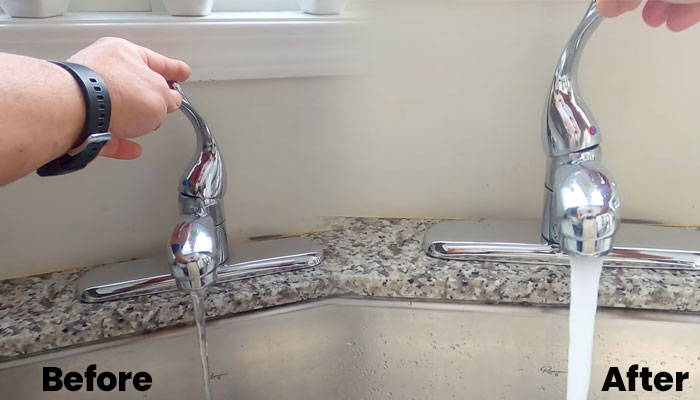How to Paint a Kitchen: A Complete Guide
Giving your kitchen a fresh coat of paint can instantly transform its look, elevate your home’s ambiance, and even boost its value. Whether you’re tackling the job yourself or just want to understand the process, knowing how to paint a kitchen correctly ensures excellent results and durability. From preparation to maintenance, this guide walks you through each step clearly and confidently so your kitchen ends up looking as stunning as you envision.
Preparing Your Kitchen For Painting
Preparation is the foundation of any successful painting project. Start by clearing out your kitchen as much as possible, remove dishes, appliances, and any loose items from cabinets and countertops. To protect your floors and furniture, lay down drop cloths or plastic sheeting. Then, clean all surfaces thoroughly to remove grease, dirt, and food residues, which can interfere with paint adhesion.
Next, repair any imperfections like holes, cracks, or dents with a quality wood filler or spackle. Sanding these repaired spots smoothes the surface and helps the paint stick better. Don’t forget to remove cabinet doors and hardware if you’re painting cabinetry: this ensures even coverage and a professional finish. Finally, tape off edges and trim around windows, appliances, and countertops with painter’s tape to create clean lines.
Choosing The Right Paint And Tools
Selecting the correct paint and tools sets the stage for a kitchen that looks great and lasts. For kitchen walls, opt for a high-quality, washable, and moisture-resistant paint, such as an acrylic latex or enamel, with a satin or semi-gloss finish to withstand humidity and frequent cleaning.
If you’re painting cabinets and trim, choose a durable paint formulated specifically for cabinetry or trim work, these offer a harder finish that resists chipping and yellowing.
About tools, invest in a good set of brushes with angled synthetic bristles for cutting in around edges and trim. Use foam rollers for smooth walls to reduce roller marks. For cabinets, a high-density foam roller or a spray system (if available) can provide the smoothest finish. Also, have a paint tray, a high-quality painter’s tape, sandpaper, and a putty knife handy.
Step-By-Step Kitchen Painting Process
Painting a kitchen involves careful steps to ensure an even, durable finish.
Tips For Painting Kitchen Cabinets And Trim
First, lightly sand cabinet surfaces to remove the glossy finish and improve paint adherence. Clean off dust with a tack cloth before priming. Use a high-quality primer designed for kitchen surfaces, especially if covering darker tones or stained wood. Apply two thin coats of paint, allowing adequate drying time between coats. Paint with the grain of the wood, using smooth, steady strokes, and avoid overloading your brush or roller to prevent drips.
Painting Walls And Ceilings Effectively
For walls, start by cutting in along edges and corners with a brush. Then use a roller with a medium nap appropriate for your wall texture. Roll in a ‘W’ or ‘M’ pattern for even coverage. Two coats are usually necessary for consistent color and durability. Ceilings often use a flat or matte finish to hide imperfections: apply with an extension pole for ease and uniformity.
Drying And Curing Times To Know
Understanding drying and curing times helps you avoid mistakes that can ruin your paint job. Most kitchen paints dry to the touch within a few hours, anywhere from 1 to 4 hours depending on humidity and temperature. But, drying is just surface-level.
The curing process, where paint hardens fully and gains maximum durability, can take anywhere from 7 days up to 30 days. During this time, avoid heavy scrubbing and placing sharp or heavy objects against painted cabinetry and walls. Adhering to recommended drying times between coats is equally critical to prevent peeling or bubbling.
Maintaining And Caring For Your Painted Kitchen
To keep your kitchen looking fresh longer, regular care is key. Clean painted surfaces gently with a soft cloth and mild detergent, avoid abrasive cleaners or scrub brushes that can damage the finish. Address spills and stains promptly, especially around cooking areas, to prevent buildup.
For cabinetry, inspect hinges and handles periodically to tighten or replace as needed so they don’t scratch the paint. If you notice minor chips or scratches, touching them up with leftover paint can prevent further damage. Finally, maintain good ventilation in your kitchen to reduce moisture buildup, helping your paint stay in good condition.
Conclusion
Painting your kitchen is a rewarding project that can dramatically brighten your space and increase its appeal. With thorough preparation, the right materials, and careful technique, you can achieve a professional finish that stands up to daily wear. Remember, patience during drying and attentive maintenance are what keep your kitchen looking its best for years to come. With this guide, you’re well-equipped to tackle the transformation confidently, so roll up your sleeves and bring your vision to life.



